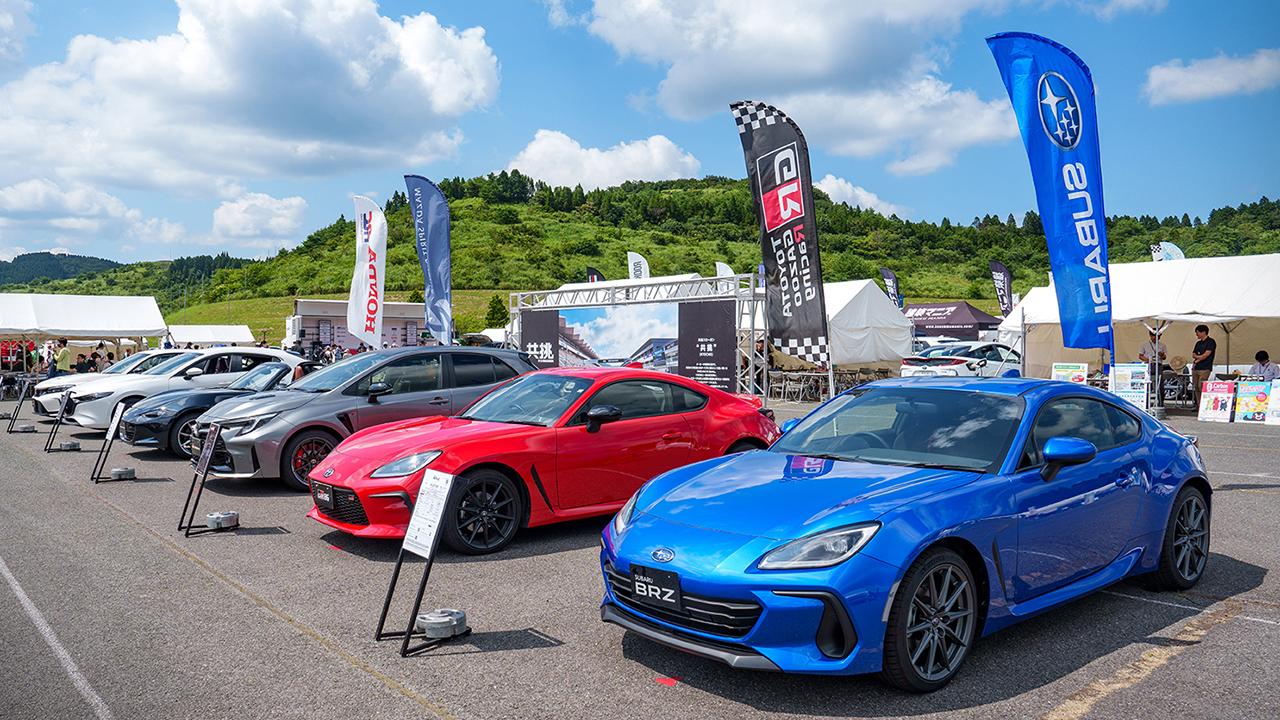
Round 4 took the Super Taikyu Series to Autopolis in Oita Prefecture, where Toyota was joined by Kyushu-based partners working together to create a carbon-neutral society.
Mazda joins fierce Toyota-Subaru rivalry
Let us turn to the racetrack, where this round saw another newcomer join the ST-Q class for development vehicles.
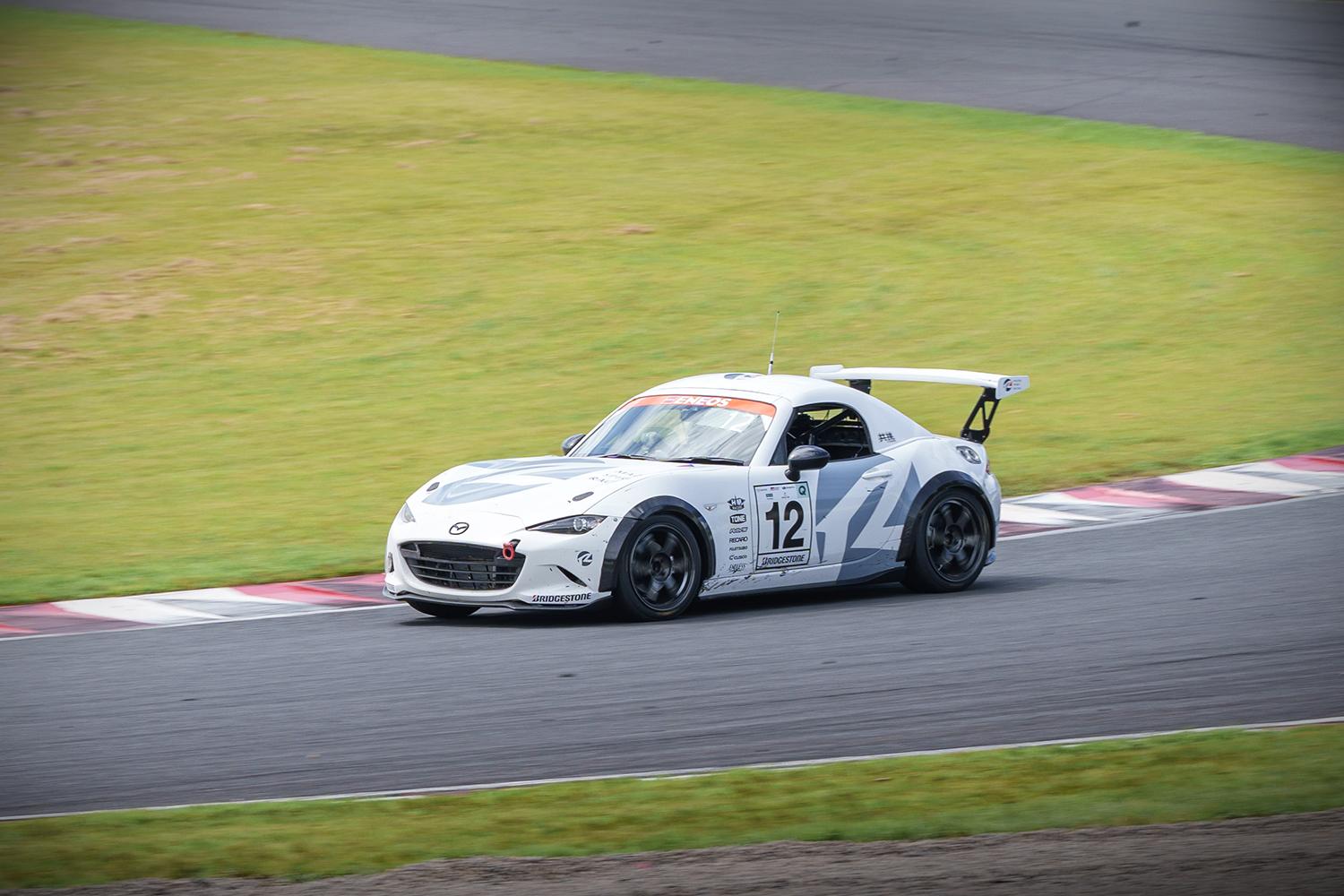
The car in question is the #12 MAZDA SPIRIT RACING Roadster, which joins the biodiesel-powered Mazda3 as the team’s second entry in the ST-Q class.
This Roadster sports a 2L straight-four engine, fueled by the same carbon-neutral gasoline substitute as Toyota’s #28 GR86 and the #61 Subaru BRZ, both fellow ST-Q competitors.
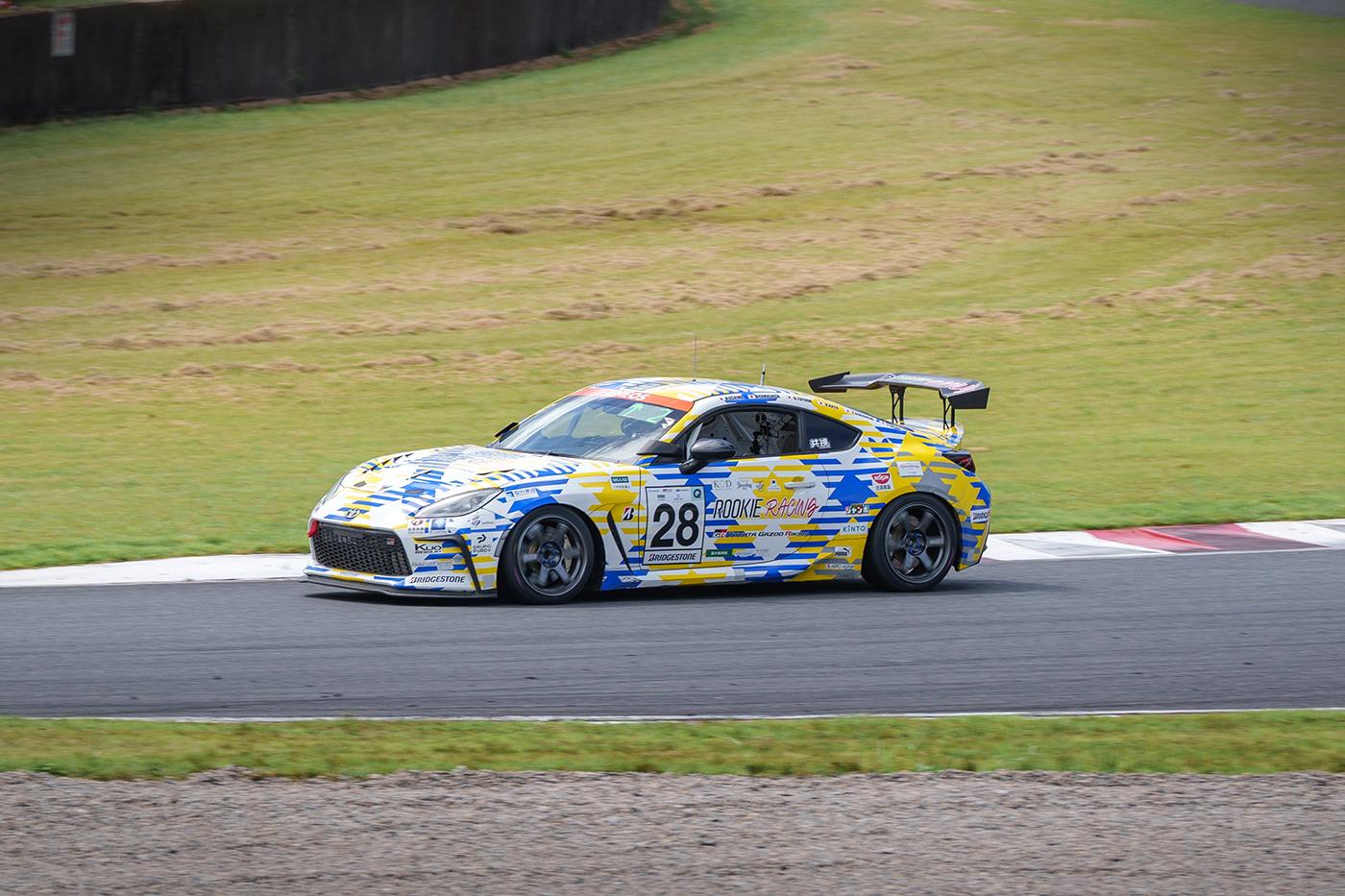
The Roadster’s entry was explained at a roundtable with MAZDA SPIRIT RACING Team Representative Ikuo Maeda, who also serves as Mazda’s Executive Fellow overseeing brand design, Carbon Neutral & Resource Circulation Strategy Department General Manager Hiroshi Kinoshita, and Powertrain Development Division General Manager Kota Matsue . Each shared their thoughts.
Representative Maeda, MAZDA SPIRIT RACING
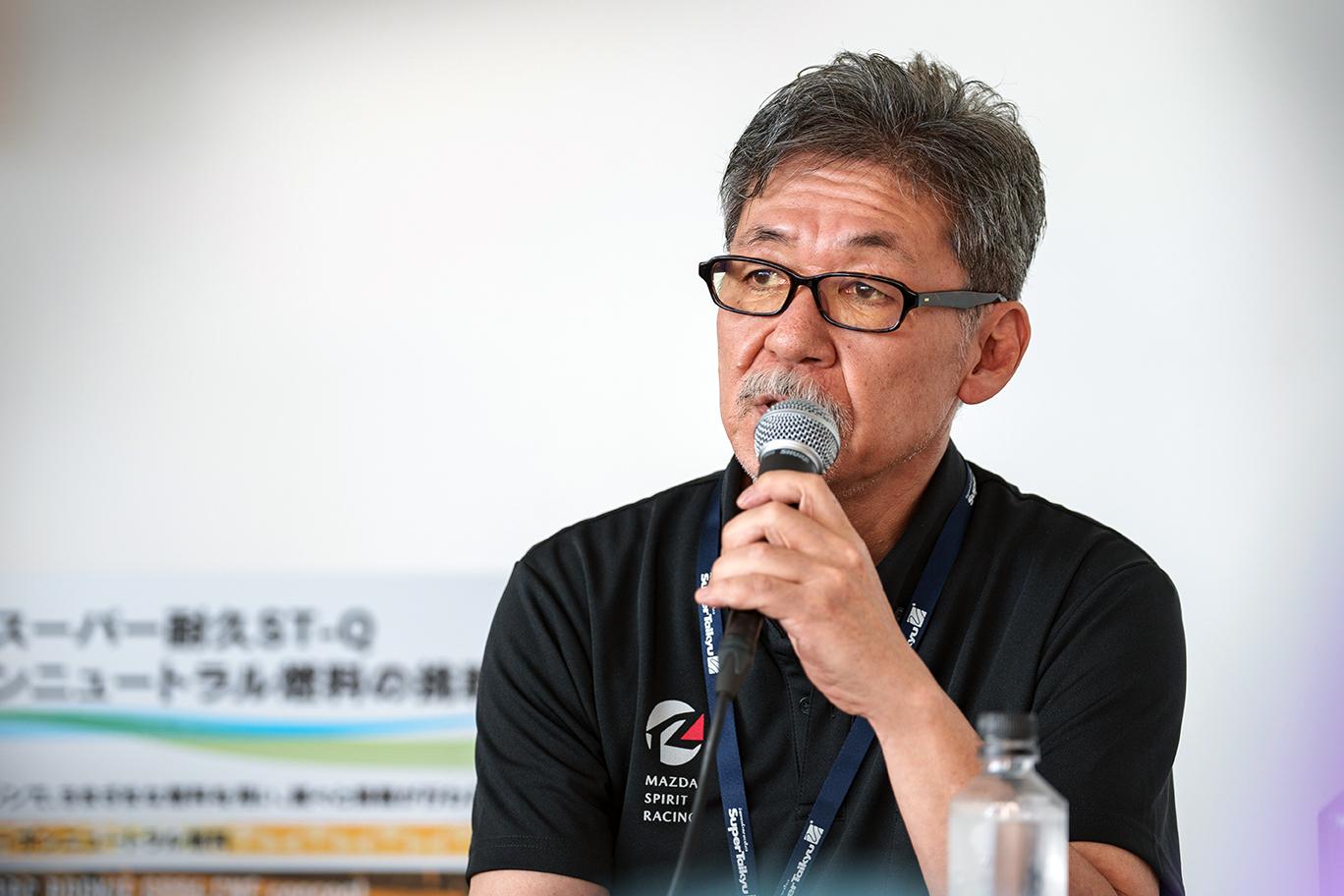
Our goal for this season is to see the Roadster running alongside the BRZ and 86. Although the Roadster still lacks that kind of speed, we’re looking enviously at the battle between the BRZ and 86 and hoping that we can make a dent in their lead.
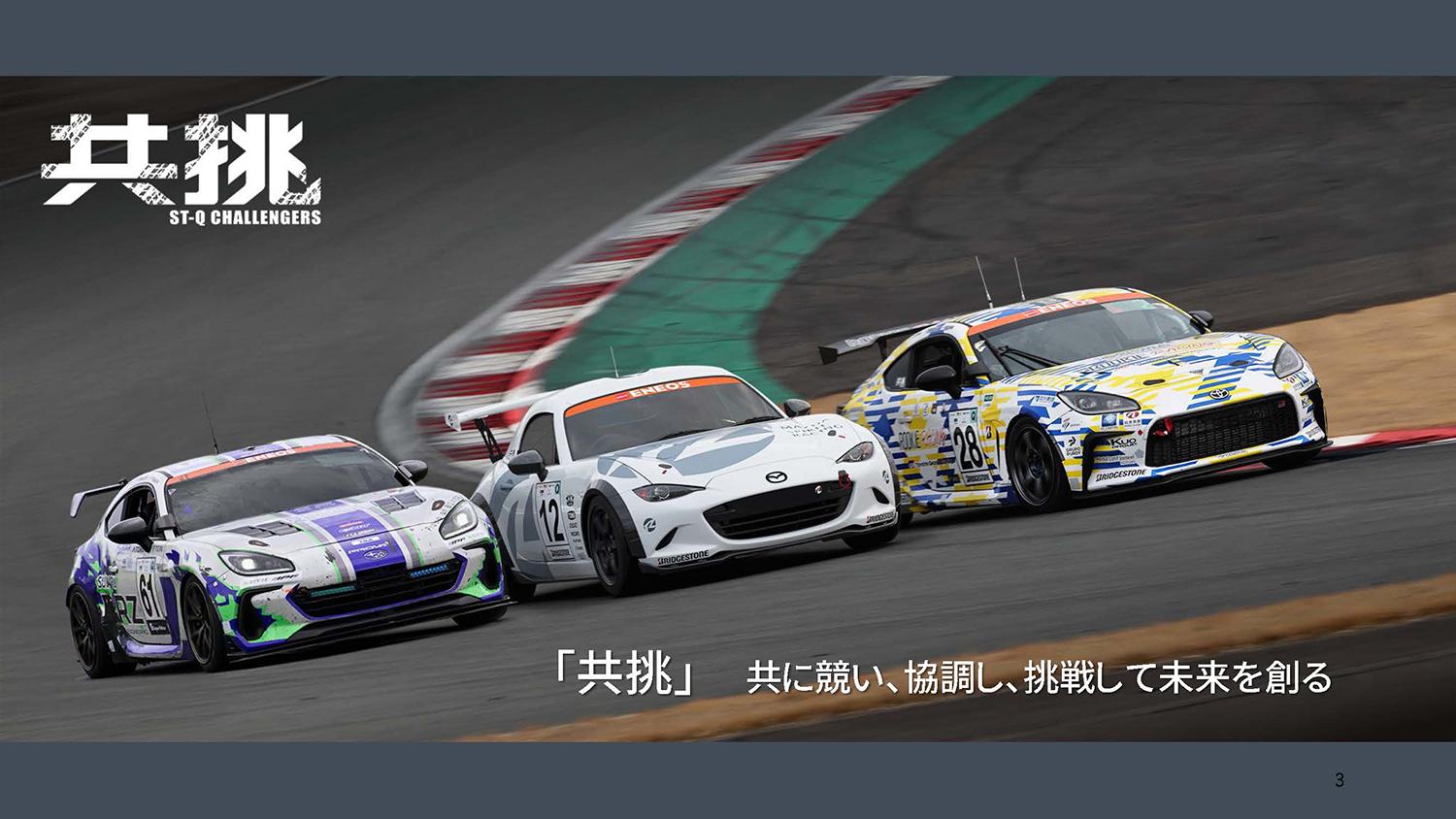
The #12 Roadster CN Concept making its debut in this race, has a 2.0L engine running on carbon-neutral fuel.
Cylinder head and piping modifications have brought the horsepower to just under 200 hp. Moving forward, we want to see how light we can make the car.
Since embarking on this Super Taikyu challenge, the benefit for us has been the tremendous growth in knowledge and experience among participating members.
Everyone has a really good eye, and their skills, experience level, and resourcefulness are also improving. I think this is the proving ground for that, and I’m glad that we went for it. We need to keep going.
General Manager Kinoshita, Mazda
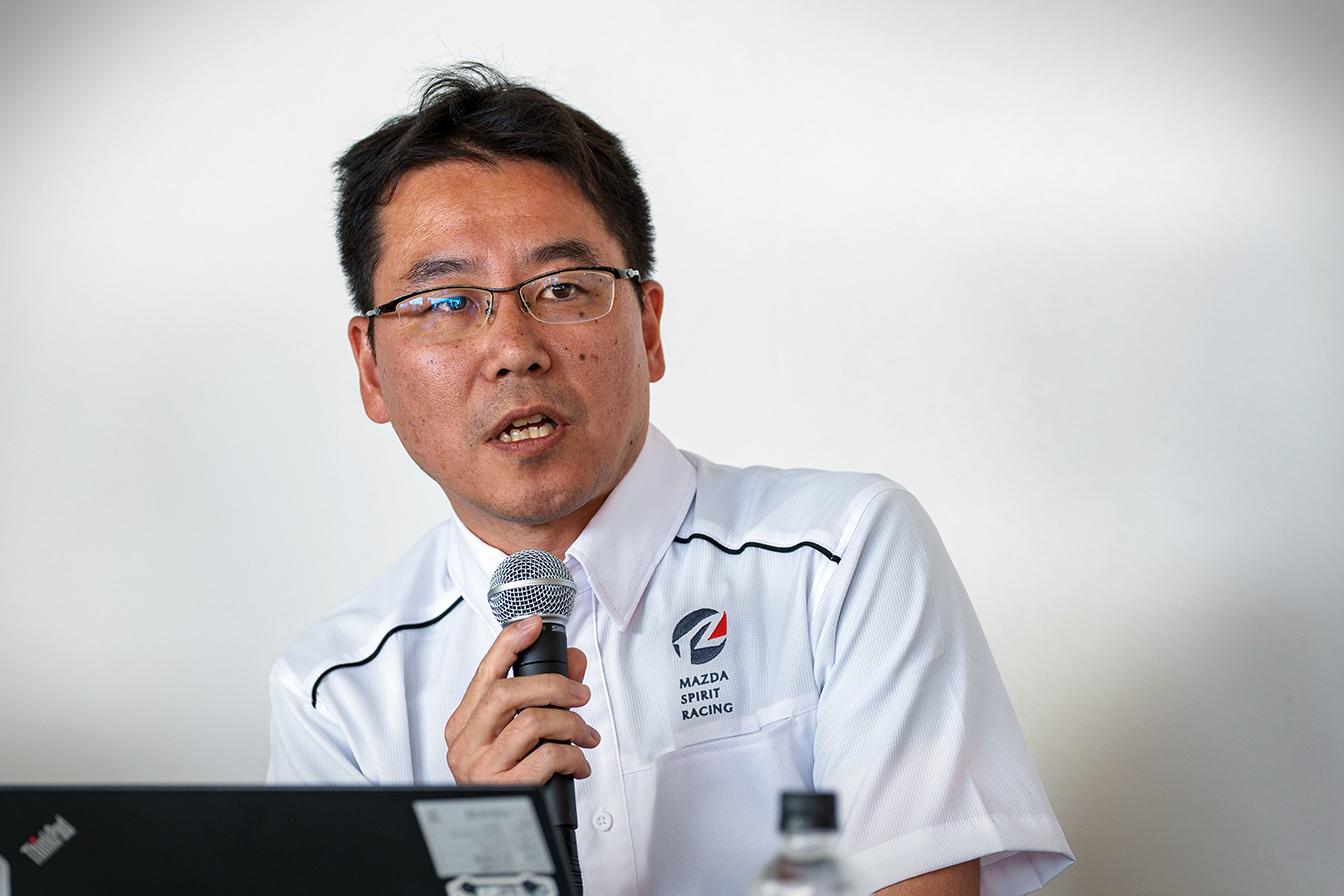
To continue making steady progress towards carbon neutrality, we believe it is important to offer customers a variety of options.
Our multi-solution approach is about putting the right car in the right place, starting with electrification. This is combined with the practical application and widespread use of biofuels, synthetic fuels, and other carbon-neutral fuels that can power internal combustion engines. We regard these fuels as another solution to the challenge of making cars carbon-neutral.
We entered the Super Taikyu in November 2021 with the Mazda2 and Mazda3 as our base vehicles, initially using them as a testing ground for broader adoption of next-generation biodiesel fuels.
This time at Autopolis, in addition to our next-generation biofuel #55 vehicle, we’re fielding the #12 car, which follows Toyota and Subaru in using a carbon-neutral gasoline substitute.
Since joining the ST-Q class two seasons ago, we have continued to take on the challenge of racing without burning a single drop of fossil fuel.
Looking to the future, we will keep developing technology options that support diverse fuels. At the same time, we want to continue honing Mazda’s unique driving pleasure and dynamic performance in the field of racing, drawing on a broad spectrum of vehicles from high-torque front-wheel drive diesel machines to lightweight rear-wheel drive gasoline cars.
General Manager Matsue, Mazda
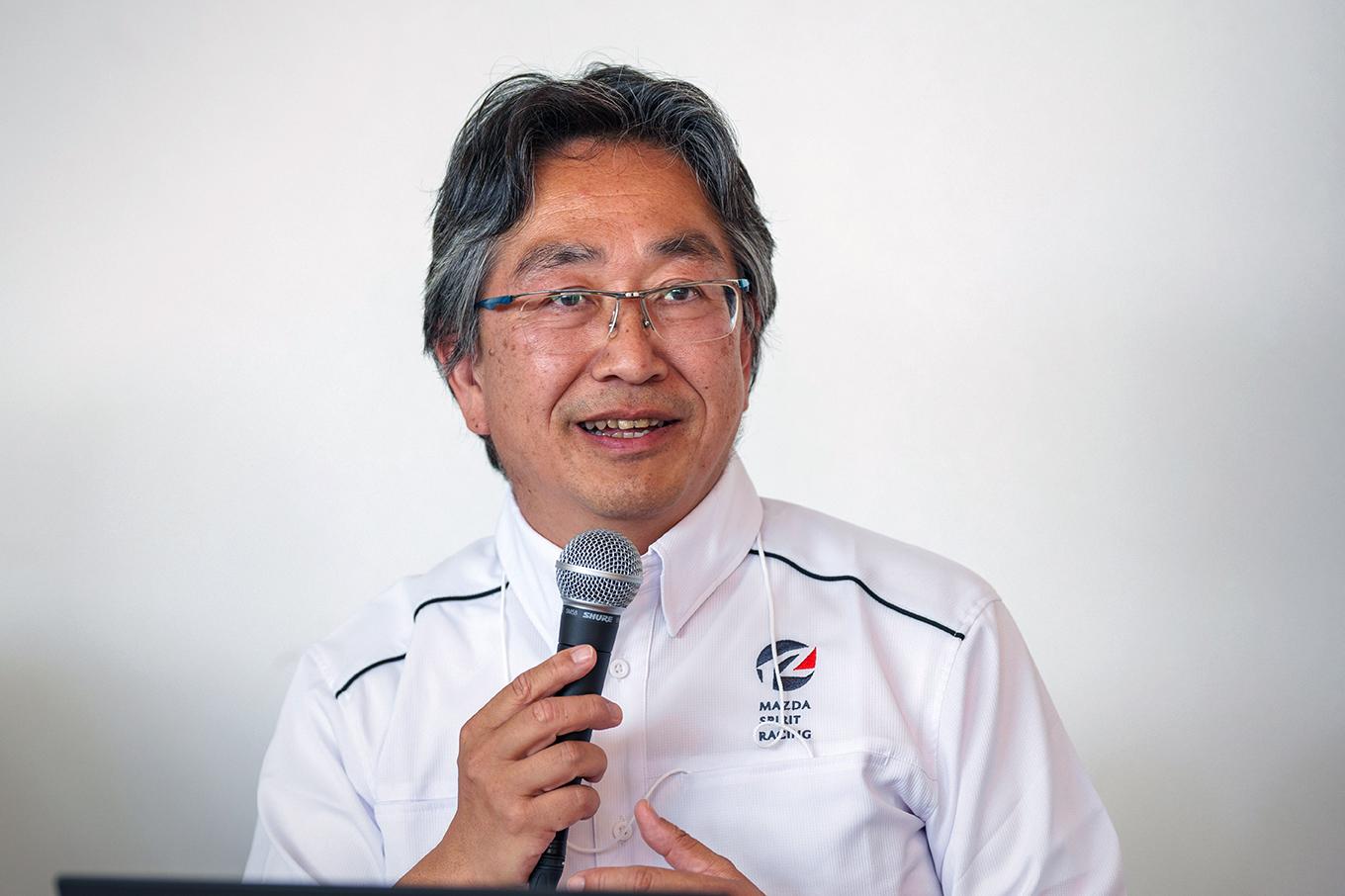
Our aim in entering this car is to test a carbon-neutral gasoline substitute fuel under the extreme conditions of racing. This is step one.
At the same time, we also hope to share information with the other OEMs racing alongside us as we explore the fuel’s market feasibility.
Although BEVs are central to our pursuit of carbon neutrality, given the different circumstances of individual countries, we also view this carbon-neutral fuel as one possible contribution to a decarbonized society.
Ultimately, we hope that carbon-neutral fuels will become widespread in the market. To make this happen, carmakers need to work together and engage in technical discussions to facilitate compromise with oil companies and governments.
Ahead of this race, we obtained bench test data using carbon-neutral fuels in place of gasoline. Despite a degree of difference, the results were similar to the data trends already shown by pioneers like Toyota and Subaru.
From here on, our technology will be tested on the track under the extreme conditions of racing.
This race will allow us to exchange information based on the same yardsticks as Toyota and Subaru. We want to accumulate experience that will help carbon-neutral fuels find widespread use both in the world of racing and the broader market.
This briefing was followed by a Q&A session with two additional participants: GR Powertrain Development Division Project General Manager Teru Ogawa, and Team Manager Masahito Motoi, who heads the Subaru R&E Center and oversees the #61 Team SDA Engineering BRZ CNF Concept.
Members from each of the three companies spoke about the significance of using the same carbon-neutral fuel.
Three companies, triple the development speed
General Manager Matsue, Mazda
Having three companies involved will give us a lot of data. As we accumulate experience, many issues will come to the forefront. By working together, we can gather more data to identify issues, speeding up the fuel’s development. I think that’s what matters most.
While we work in the same environment, there are differences between Mazda, Toyota, and Subaru engines. These differences will gradually expose different issues.
I believe this will result in a better fuel, one that is more readily adopted by the market.
In this way, we can offer increasingly diverse fuels and engines.
I feel that bringing the three companies together also sends a stronger message that we are committed to making carbon-neutral fuels widely available.
Team Manager Motoi, Subaru
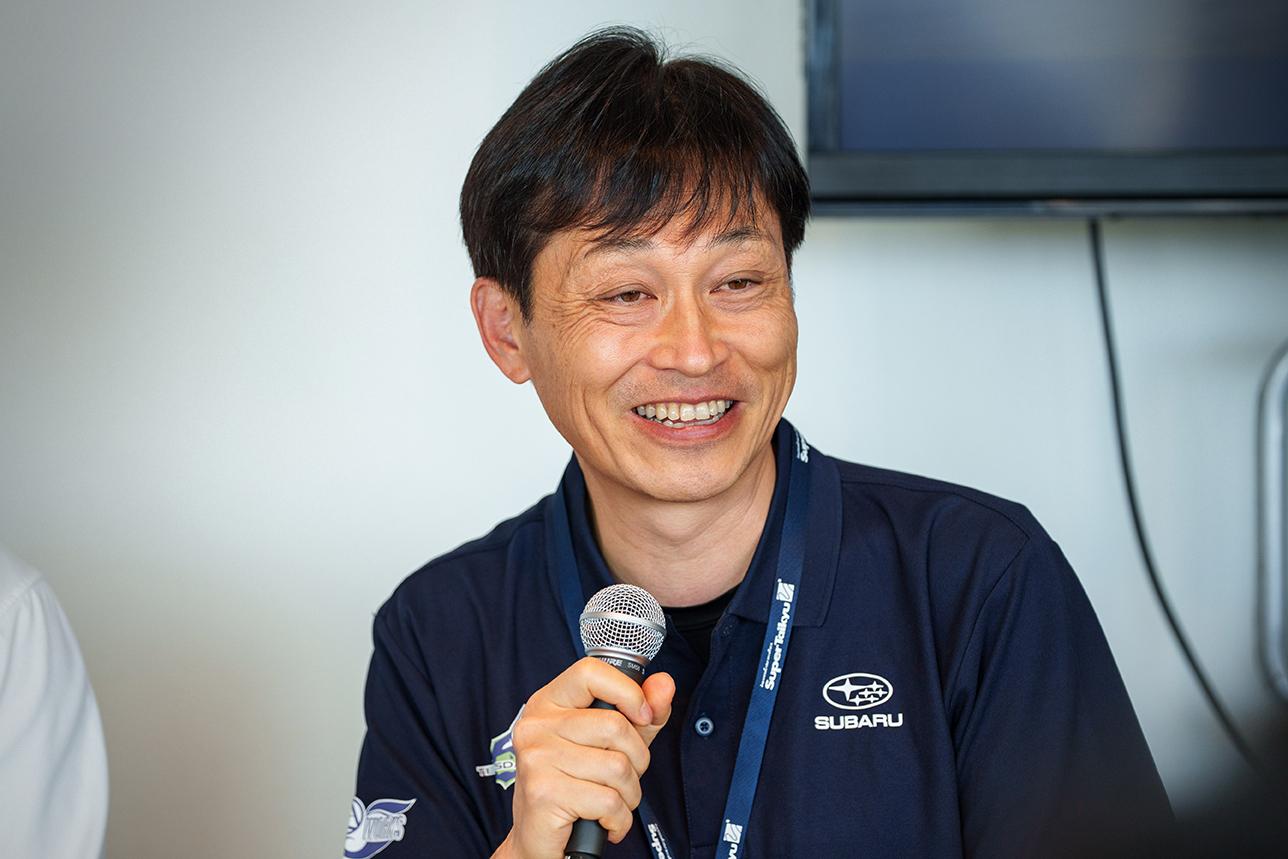
In terms of using combustion, there are similarities as well as differences. We will aim to create synergies by engaging in deep dialogue on technical matters to boost the speed of development.
When it comes to creating a strong groundswell, the more partners we have, the better. Likewise, having more people in the mix also makes for more exciting competition. This is another reason why we need more partners on board.
Project General Manager Ogawa, GR
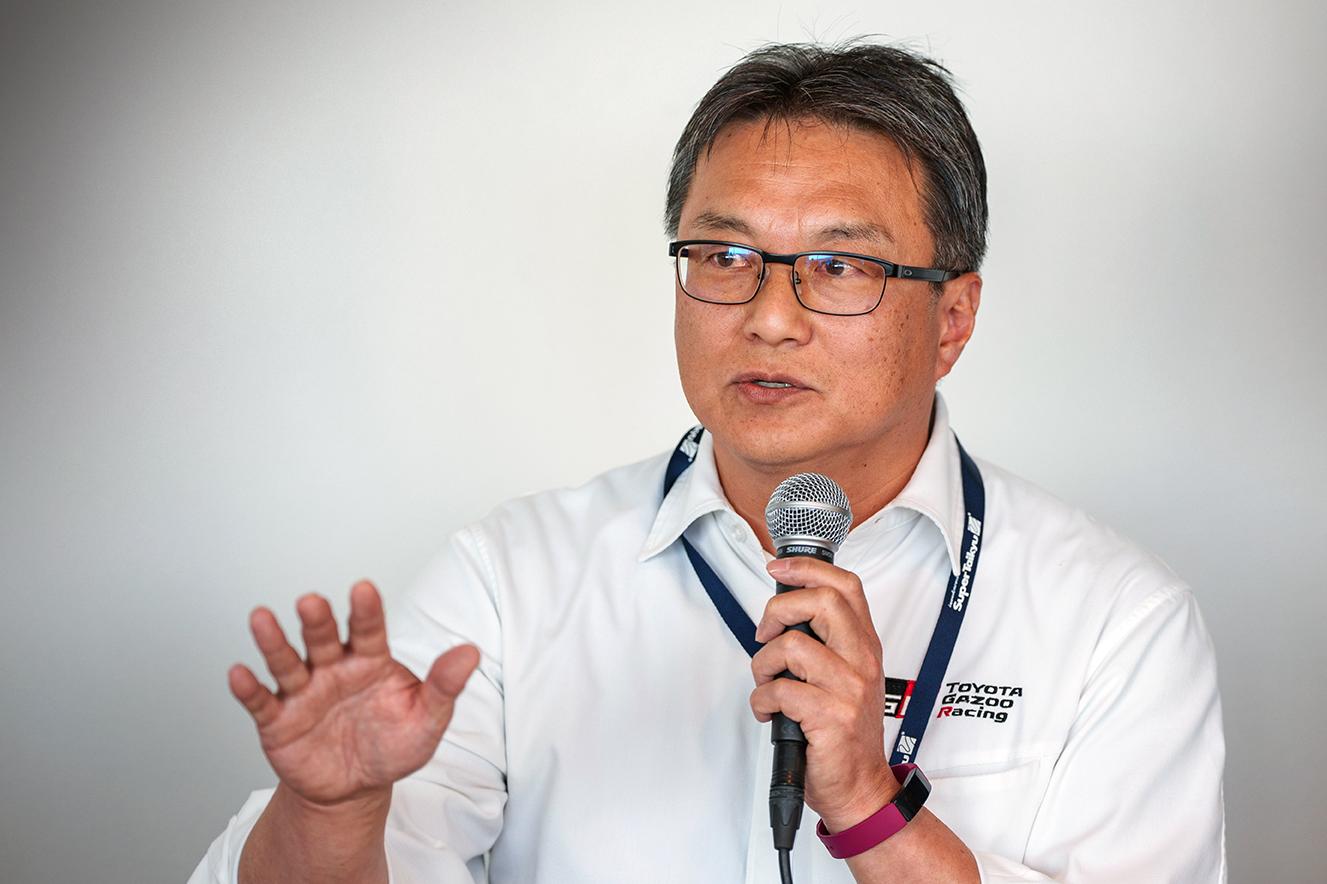
Mr. Maeda spoke about the tremendous growth in knowledge and experience that comes from racing. When you have three companies involved, the effect is tripled.
Yesterday, our engineers again met with their peers at Mazda. Just as in the demanding conditions of racing, they suggested that our three companies should also observe the same parameters out in the general market.
Doing so would make comparison easier across our three engines: Mazda’s 2.0L straight-four, Subaru’s horizontally opposed four-cylinder, and our turbocharged 1.6L straight-three. We expect this to increase our expertise dramatically.
Mazda’s 2.0L engine has solid foundations and rapid combustion, and I’m sure we’ll obtain a lot of data on how this might be applied to our TNGA NA engine.
I trust that Mazda will share any insights they gain (laughs). That would mean we do not have to develop and evaluate from the ground up, allowing us to build our knowledge even more quickly.
During the race period, we’ll be sure to hold waigaya sessions (open, frank discussions) on carbon-neutral fuels between the five companies. Although we all have confidentiality agreements with fuel manufacturers, we will share our results as much as possible.
Honda and Nissan currently use different fuels, but we are also talking about converging on the same fuel in the future.
Super Taikyu Round 4 at Autopolis revealed Kyushu’s unique efforts to create a carbon-neutral society and an ST-Q class co-challenge that continues to reach new speeds.

